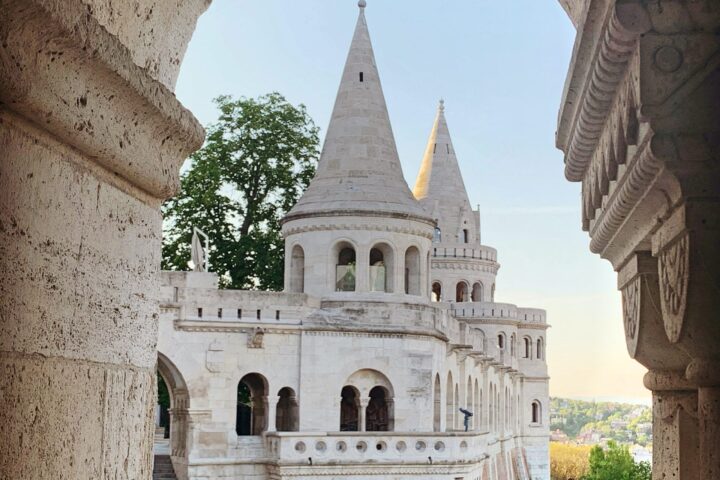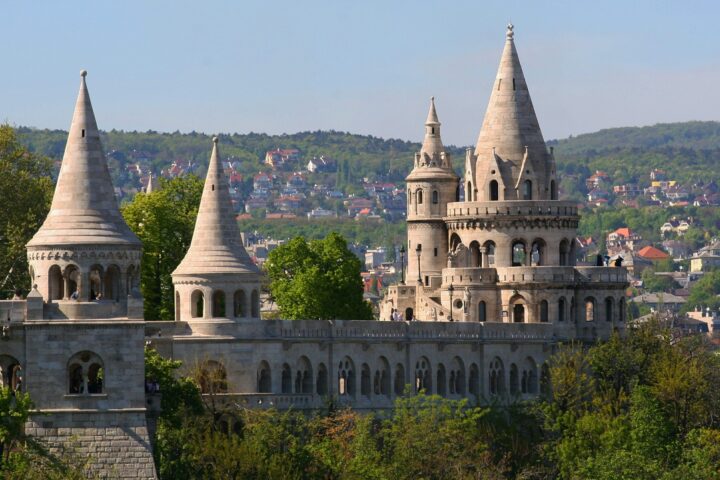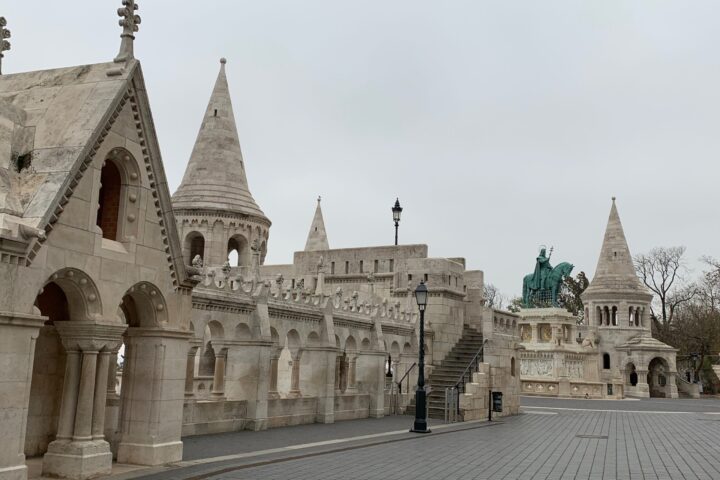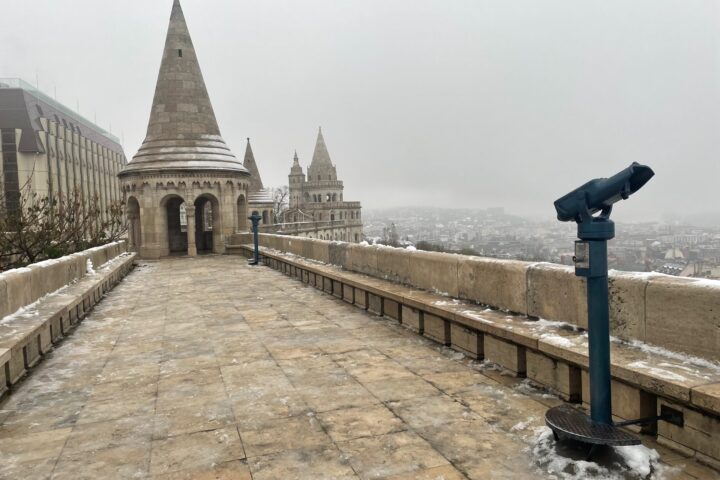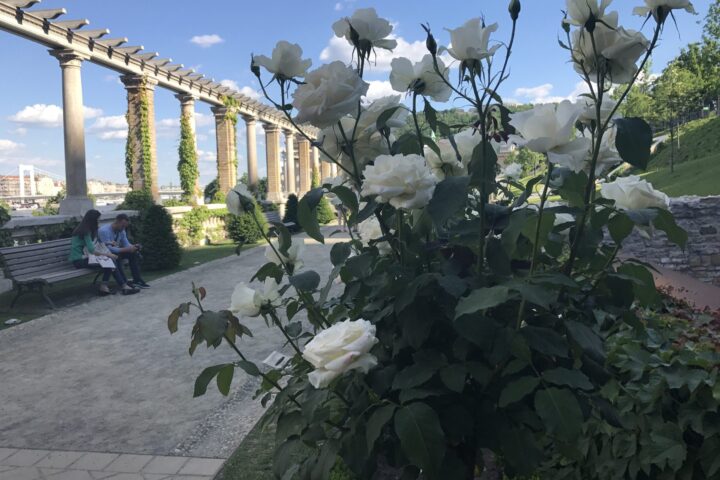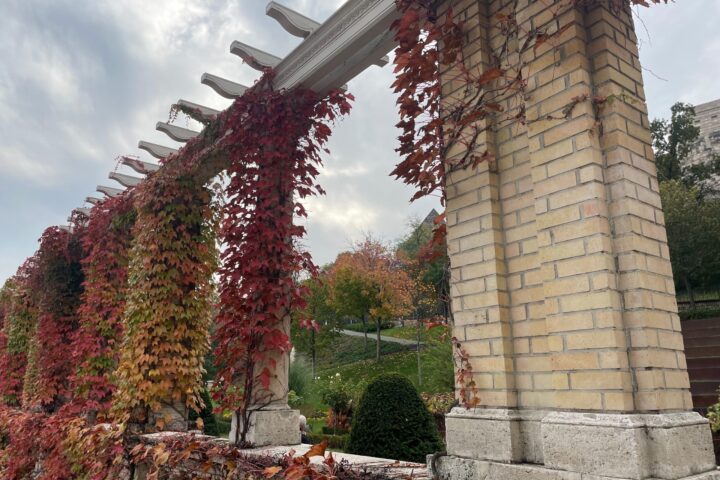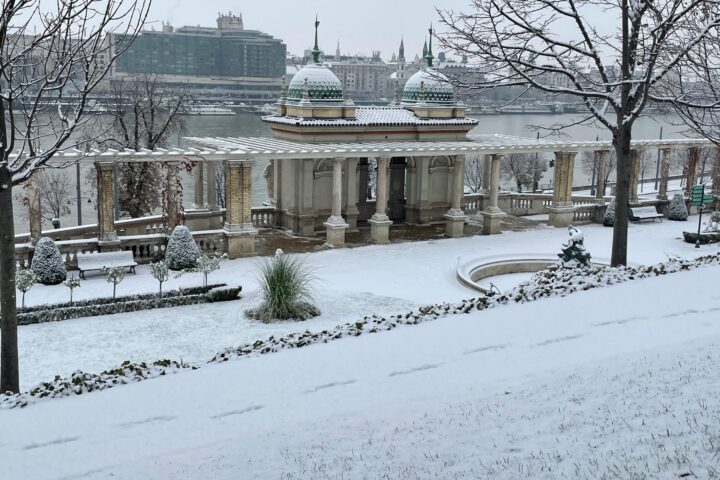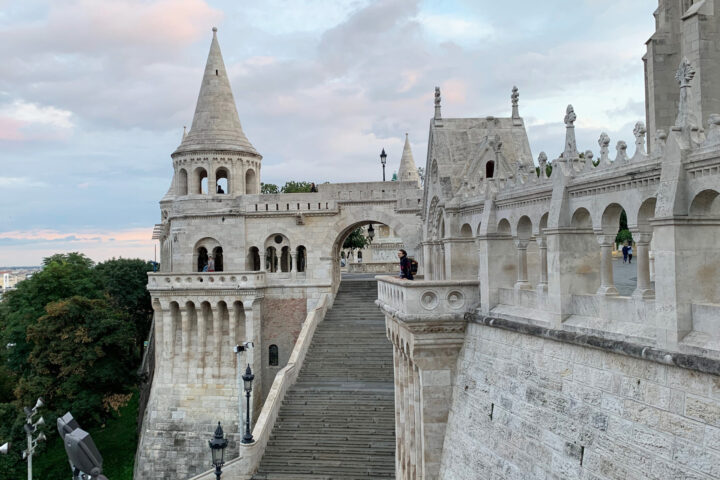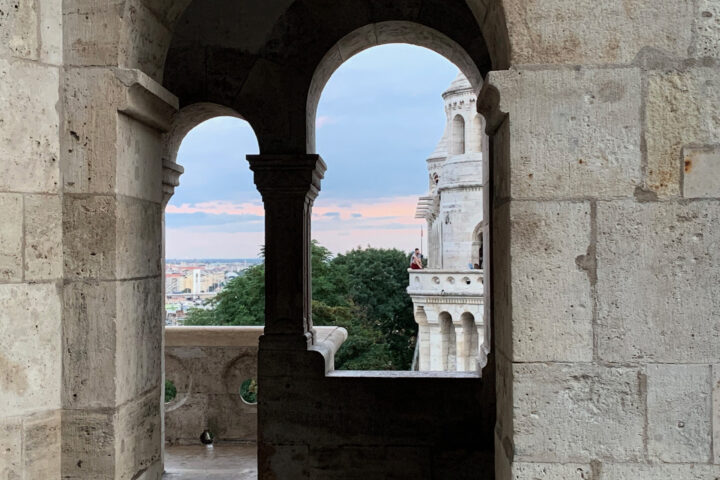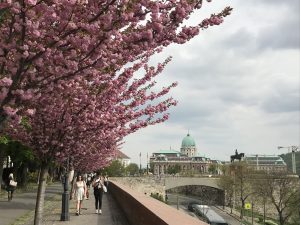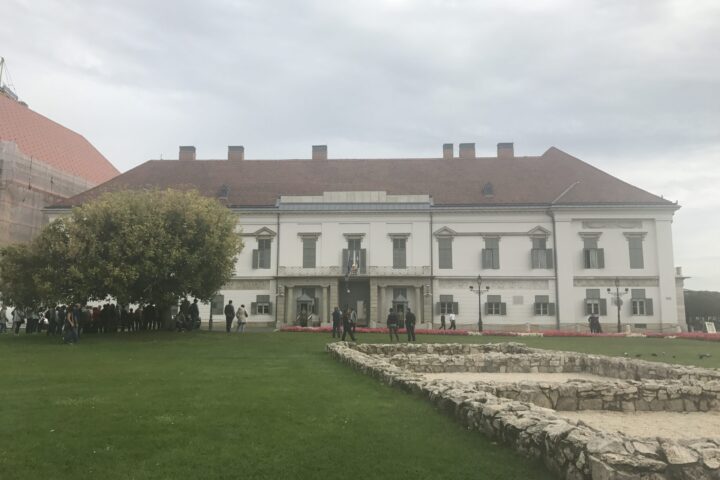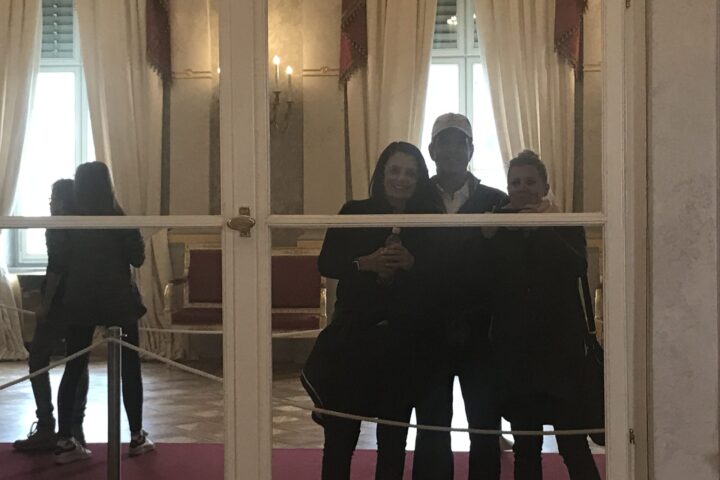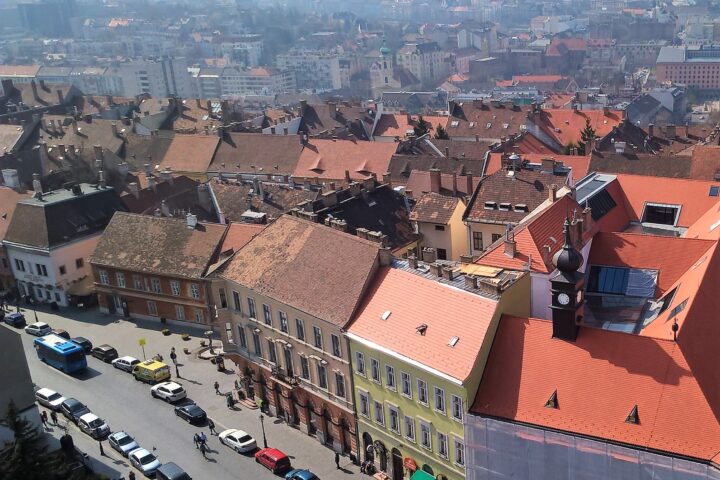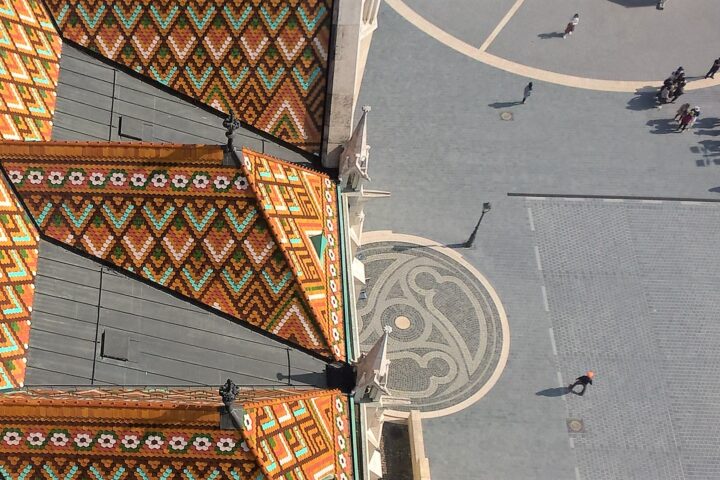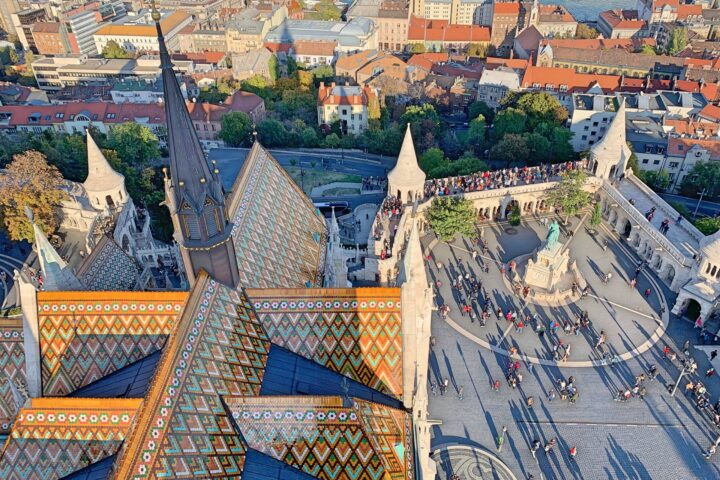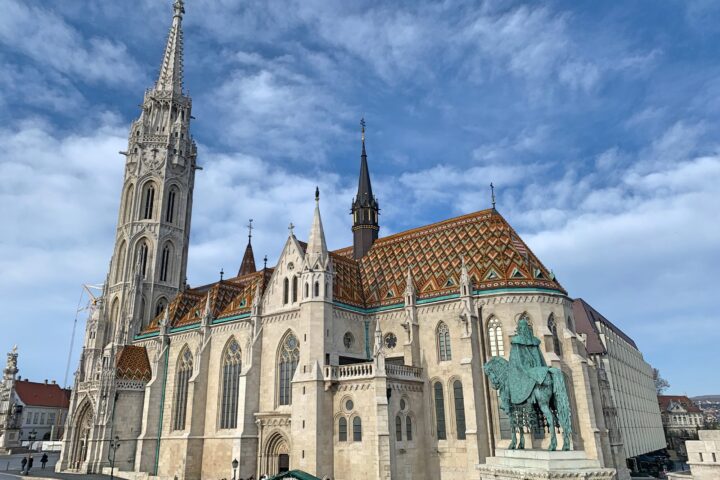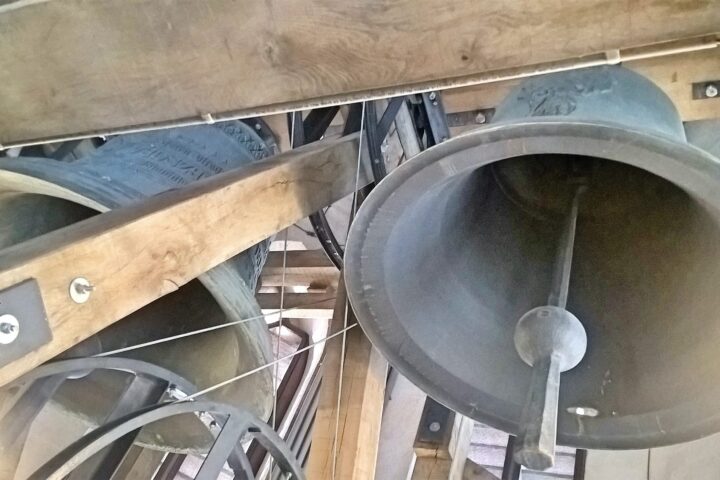Here is another Budapest attraction that I see almost every day, thanks to all the Budapest tours that you’re booking with me. Have a look at how the Fisherman’s Bastion looks like in spring, summer, autumn and winter.
I’m spending a lot of time in Budapest every day, I consider myself very lucky to be able to see the changing of seasons, and I try to capture those special moments. Have a look at this photo gallery to see the four different faces of the Buda Castle Garden Bazaar in spring, summer, autumn and winter. Book a Buda Castle Walking tour with me to see the beautiful Royal Gardens for yourself!
This is probably the number one Instagram spot in Budapest, a cool place to take your selfie when you visit my beautiful city. It’s usually very crowded and sometimes you have to wait to get to the best photo spot but there are times of the day when it’s really quiet and you can have it all for yourself. Visiting the Fisherman’s Bastion is part of my Buda Castle walk and can be included in the itinerary of other tours as well.
The cute little cable car has been transporting millions of passengers from the Chain Bridge to the top of the Castle hill (or the other way) since its opening in 1870. You might have seen it appearing in Wes Anderson’s The Grand Budapest Hotel, too.
Originally it was operated by steam and was destroyed in WW2. Since its reconstruction it’s been an electric cable car.
My insider tip: if you want to avoid long lines, don’t take it to go to the top but take it to descend to the Chain Bridge from the Royal Palace.
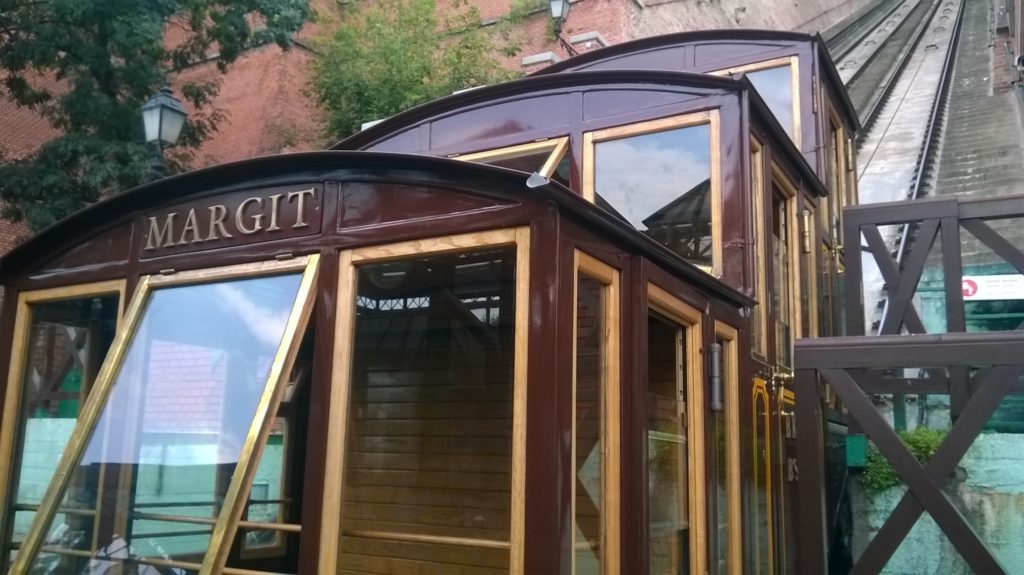
Buda Castle Funicular 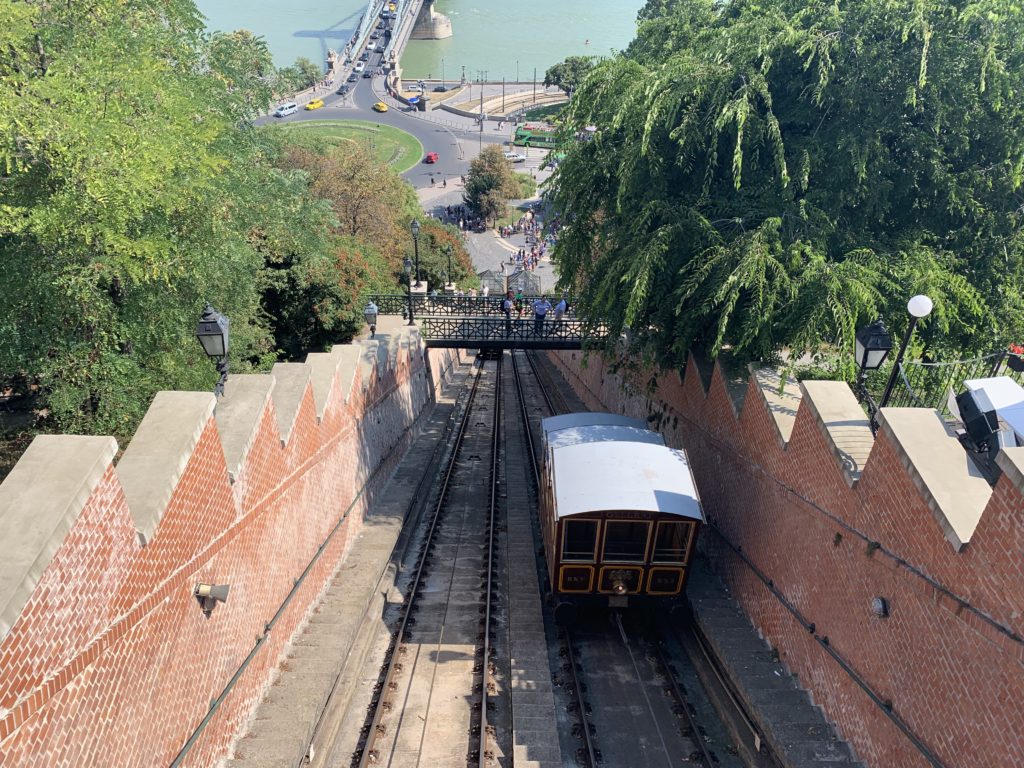
Buda Castle Funicular
I’m not exactly the person who gets invited to the Presidential Palace very often but we were very lucky with my guests last weekend when the doors of the Sándor Palace were open and the public could walk around the beautifully designed interior.
Compared to the relatively simple outside the interior is surprisingly richly ornate, at times I felt like walking around the Versailles Palace. The building is from 1806 and was the residence of the country’s prime minister from 1867. That’s when Queen Elisabeth or Sisi visited the handsome count Andrássy several times after enjoying a performance at the Castle Theatre next door.
The building was restored and became the seat of the offices of the President in 2003, the actual furnitures are reproductions of the originals. The entire restoration was conducted in accordance with the original blueprints. The garden is absolutely stunning with a great view over the Pest side. There is no guarantee we can tour the interior when you book a tour in the Buda Castle district but I’ll find a way to show you something just as beautiful as the Sándor Palace.
The 20th of August is always very special for Hungarians, not only because we celebrate St. Stephen, the founder of the Hungarian Christian state but also because our country’s “birthday cake” is introduced. The cake is selected every year by the panel of reputable master confectioners, the applicants are to create innovative and creative cakes reflecting traditional Hungarian tastes and the cake should also have to be connected to the 20th of August holiday.
And now, please meet the “Green Gold of Őrség”, this year’s winner. It comes from a small Salgótarján cake shop and has the colours of the Hungarian flag (red-white-green). The layers of the cake are: pumpkin seed oil and almond flour sponge cake, white chocolate ganache, crunchy pumpkin seed praline, raspberry jelly and pumpkin seed jelly.
What can I say? We’we just tasted this beautiful cake with my guests today in the Ruszwurm cake shop near the Matthias Church and it was delicious. Enjoy!
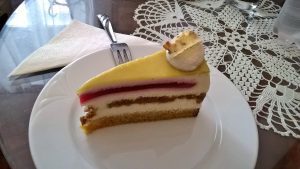
The Buda Castle district is the oldest part of Buda, many of the buildings are originally from the Middle Ages. Buda became the capital of Hungary by the middle of the 13th century, the castle and the medieval town were constructed in the top of the Castle hill.
I don’t want to disappoint you but The Castle district is not a real castle. The Hungarian Medieval castle, residence of many of our great kings, constructed in Gothic and Renaissance architectures was destroyed in the 17th century. Only some parts of it are accessible in the Budapest History Museum, unfortunately the rest of the castle rest in the ground now.
You can walk up the hill along the ramparts of the Medieval Castle to get to the 18th century Baroque Palace which houses the Budapest History Museum and the National Gallery. The cobblestoned streets of the historical old town of Buda lead you to the Matthias Church, one of the oldest churches of the city originating from the 13th century. If you have some time, you really need to climb the 197 stairs to the church tower from where you can have the best view over our beautiful city.
From the top of the Fisherman’s Bastion you can enjoy the panorama over the Parliament building and the Pest side.
Continue your walk in the civilian town, admire the unique architecture of the National Archives and wonder around the old Jewish quarter. Probably the most interesting fact about the distric is that there is a 12 km long underground cave and cellar complex underneath the Castle District. There are 2 museums where you can discover this unique labyrinth. The Hospital in the Rock was a military hospital during WW2 and a nuclear bunker during the Communist era. The Labyrinth museum is all about scary fun and you might also meet Dracula, the infamous vampire count.
I’d be glad to show you the famous attractions and the hidden treasures of the neighborhood, too, book the Buda Castle walk!
One of the oldest churches of Budapest, a working church, an amazing place for wedding ceremonies, Matthias Church, where you can actually feel and see our history of thousand years in Europe. The church is located on the very top of the Castle hill, in the heart of the Buda Castle District.
There are very few places where you can see both Christian and Muslim ornaments, this church is one of them. It looks shiny and new from the outside, I’m sure you’ll be amazed by its interior too, especially after I reveal all its dark and funny secrets during the Buda Castle Walk. We might also climb to the spire, so that you can enjoy the amazing view from the top of the world. You can admire the stunning roof structure which is decorated by 250.000 ceramic tiles and can also see the church bells.
